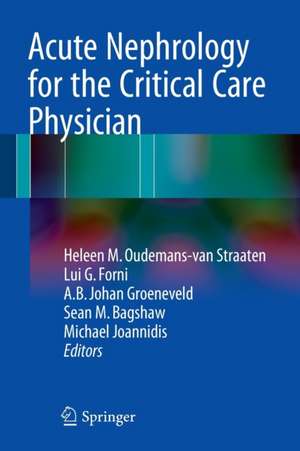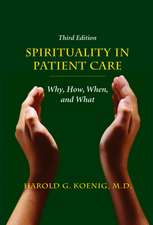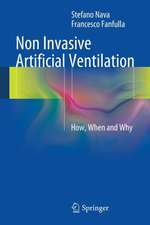Acute Nephrology for the Critical Care Physician
Editat de Heleen M. Oudemans-van Straaten, Lui G. Forni, A.B. Johan Groeneveld, Sean M. Bagshaw, Michael Joannidisen Limba Engleză Paperback – 29 iun 2015
Preț: 715.71 lei
Preț vechi: 753.39 lei
-5% Nou
Puncte Express: 1074
Preț estimativ în valută:
136.96€ • 143.47$ • 113.50£
136.96€ • 143.47$ • 113.50£
Carte tipărită la comandă
Livrare economică 08-22 aprilie
Preluare comenzi: 021 569.72.76
Specificații
ISBN-13: 9783319173887
ISBN-10: 331917388X
Pagini: 200
Ilustrații: VIII, 286 p. 22 illus., 19 illus. in color.
Dimensiuni: 155 x 235 x 17 mm
Greutate: 0.42 kg
Ediția:2015
Editura: Springer International Publishing
Colecția Springer
Locul publicării:Cham, Switzerland
ISBN-10: 331917388X
Pagini: 200
Ilustrații: VIII, 286 p. 22 illus., 19 illus. in color.
Dimensiuni: 155 x 235 x 17 mm
Greutate: 0.42 kg
Ediția:2015
Editura: Springer International Publishing
Colecția Springer
Locul publicării:Cham, Switzerland
Public țintă
Professional/practitionerCuprins
1. Acute Kidney Injury (AKI): Definitions and clinical context (Z. Ricci).- 2. Epidemiology of AKI (E. Hoste).- 3. Pathophysiology of AKI: Ischemia/reperfusion, Sepsis/inflammation, Toxicity, Vascular (A.B.J. Groeneveld,).- 4. Diagnostic work-up of the patient with suspected AKI: Oliguria, Metabolic acidosis (J. Prowle).- 5. Uremic toxins (R. Vanholder).- 6. The kidney and other organs/conditions: Heart, Cardiorenal syndromes, Uremic pericarditis, Lungs/Asthma renale, Liver/Hepatorenal syndrome, Gut/Uremic mucositis/GI permeability, Brain, Coagulation, Pregnancy (S. Bagshaw).- 7. Biomarkers for AKI (M. Ostermann).- 8. Prevention of AKI and protection of the kidney: Fluids, Vasopressors, Inotropes and vasodilators, Anti-inflammatory treatment, Antioxidants; Prevention of contrast associate nephropathy (M. Joannidis, co-authors ICM paper).- 9. Timing of renal replacement therapy (RRT) in AKI (S. Bagshaw,).- 10. Dosing of RRT (C.S.C. Bouman).- 11. Types of RRT: Continuous vs. intermittent, Convection vs. diffusion, Predilution vs. Postdilution, SLED, Replacement fluids, Membranes, Biocompatability (L.G. Forni).- 12. Anticoagulation for RRT: Heparin, Citrate, HIT (H.M. Oudemans).- 13. Metabolic aspects of continuous renal replacement therapy (CRRT): Control of acidosis, Control of electrolytes, Bioenergetic gain and loss, Loss of (micro)nutrient, Nutrition (O. Joannes Boyeau).- 14. CRRT: in sepsis, after cardiac surgery (P. Honore).- 15. CRRT in the pediatric population (Z. Ricci).- 16. Drug removal by CRRT and drug dosing in the patient on CRRT (M. Schetz).- 17. CRRT for intoxications (D. Cruz).- 18. How to avoid harm in the patient with AKI: summary of key points of previous chapters (H.M. Oudemans).- 19. Follow-up and long-term renal outcomes of patients surviving AKI (J. Prowle).
Recenzii
“This is an overview of the physiology and early therapy of kidney dysfunction that can occur in patients in the critical care unit. … This is a concise, easy-to-read book for bedside intensivists, with a view to facilitating more effective consultation and performance of renal replacement therapy. Trainees with significant critical care exposure, fellows in advanced critical care training, and staff members desiring a rapidly read pocket guide will benefit from this book … .” (David J. Dries, Doody's Book Reviews, August, 2015)
Textul de pe ultima copertă
This practical guide provides the reader with answers to important clinically relevant questions regarding the evaluation and management of acute kidney injury (AKI). All aspects of critical care nephrology are covered, from pathophysiology and diagnosis to prevention and treatment. The questions considered relate to a wide range of issues, such as: How do I diagnose AKI? How can I protect the kidney in clinical practice? How do I manage patients with AKI? When should I initiate and how do I perform renal replacement therapy (RTT)? Which type of RTT is most appropriate for my patient? Should I give specific nutrients? In addition to providing practical guidelines and treatment algorithms, the book includes calculators for continuous RRT and anticoagulant dosing. The authors are internationally renowned experts in the fields of Intensive Care Medicine and Nephrology, and all contributions are written in a clear and concise style and have been peer reviewed. Acute Nephrology for the Critical Care Physician will serve as a very useful source for intensivists, internists, anesthesiologists, and nephrologists involved in the management and treatment of critically ill patients at risk of or affected by AKI.
Caracteristici
Answers clinically relevant questions regarding the evaluation and management of acute kidney injury Covers a wide range of issues Provides practical guidelines and treatment algorithms Includes calculators for continuous renal replacement therapy and anticoagulant dosing













